The rest of my gauges are pinned to cork boards. I have tried to group similar items together but the overall order is fairly random.
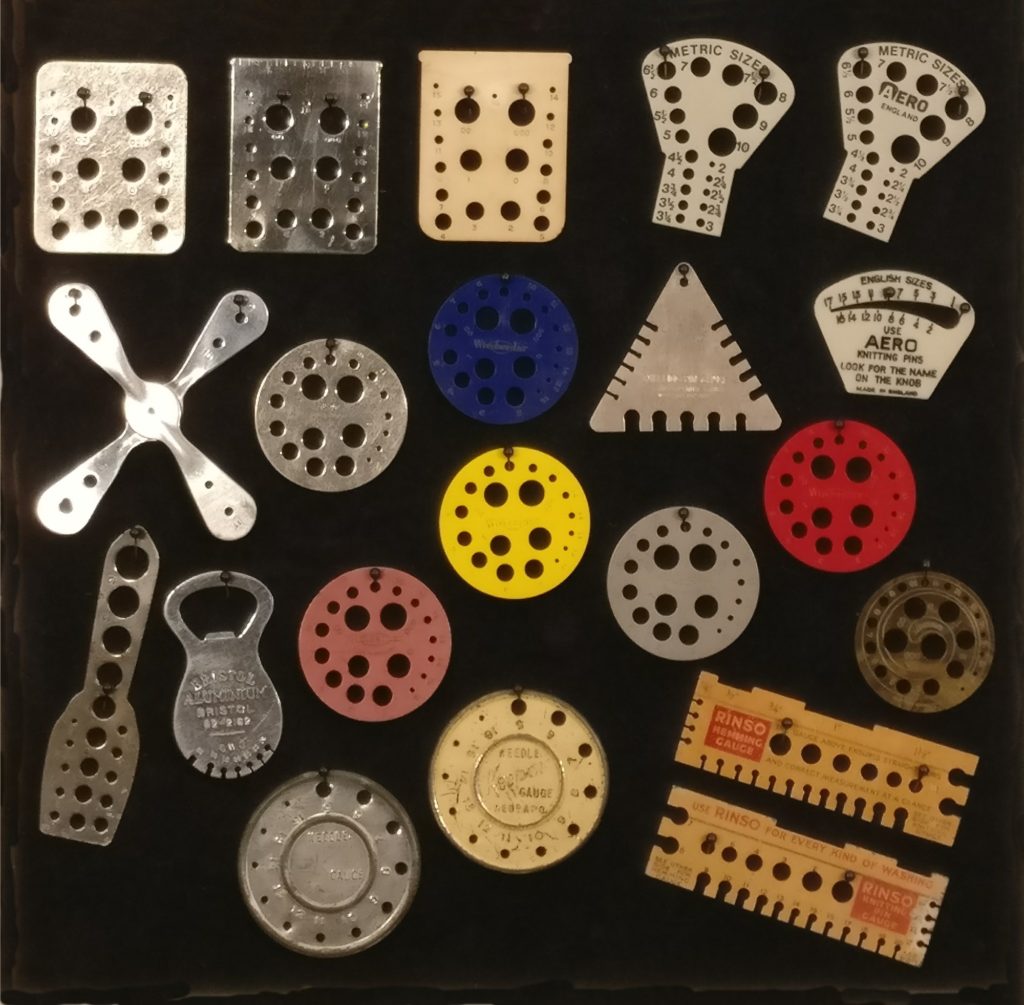
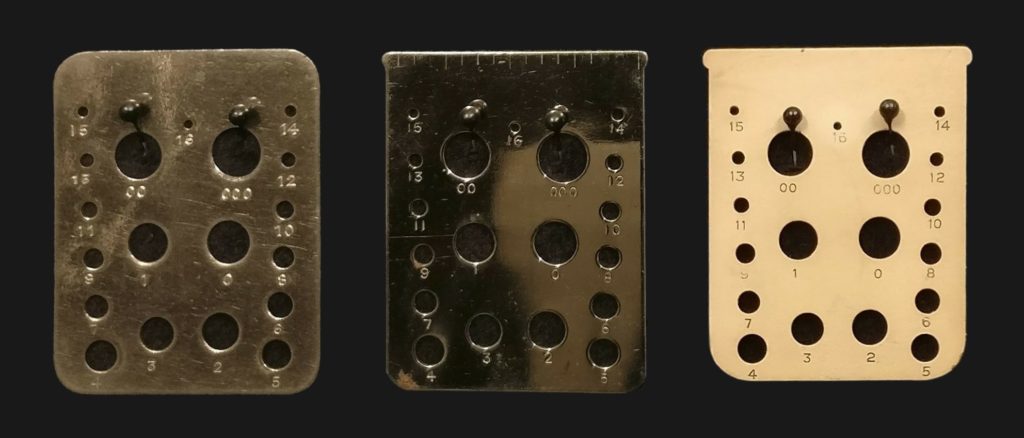
This shape was fairly common. The lettering, and placement of holes, on the metal gauges, are so similar they look as though they could have been stamped on the same machine. The overall shape is different.
The centre gauge has a ruler along its top edge but there is nothing to indicate what the markings are.
The two gauges on the right have protrusions that look as though they should be hinged as the lid of something. I do not think this was ever how they were used.
The cream coloured gauge is a very unusual material. It looks like cardboard but must be some kind of matt plastic. The sizes on all three gauges are from 000 to 16.
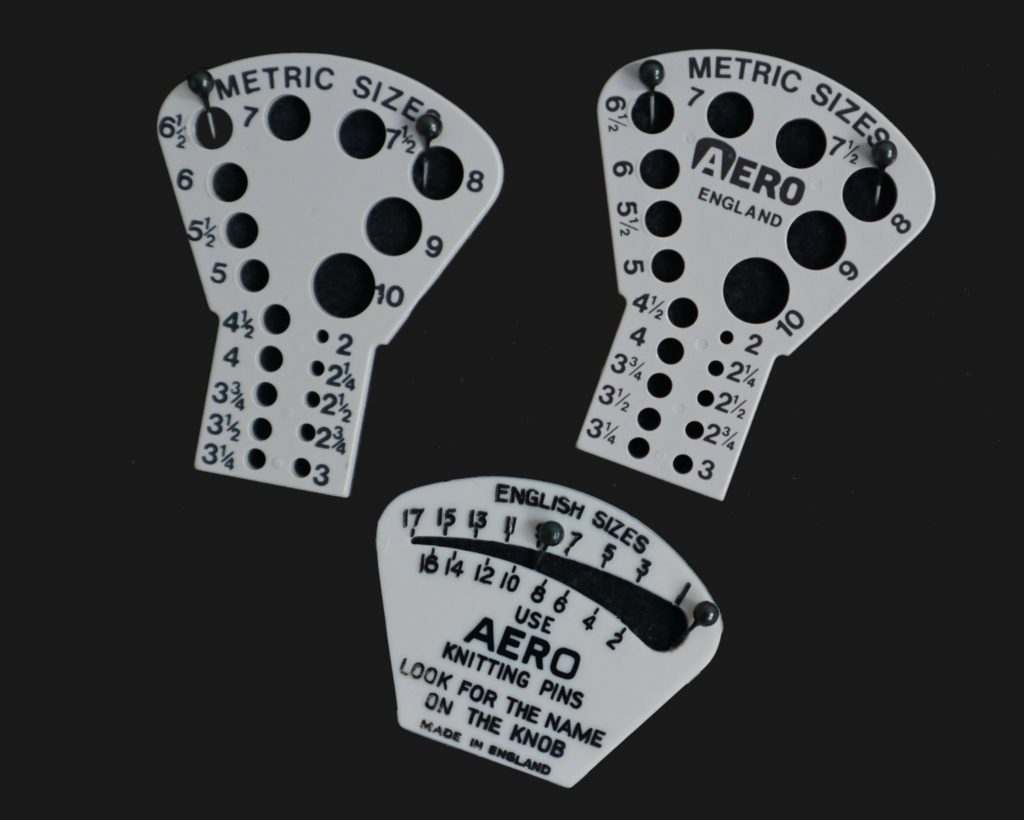
Three Aero gauges, made to look like the ends of knitting needles. Two are the same shape. The one without the Aero name is plain on the back; the other has English sizes from 000 to 14.
The smaller one has a slit, not holes. It has metric sizes on one side and English on the other. It says Use Aero knitting pins. Look for the name on the knob. They probably date from the early 70s, just before the (theoretical) changeover to metric sizing.
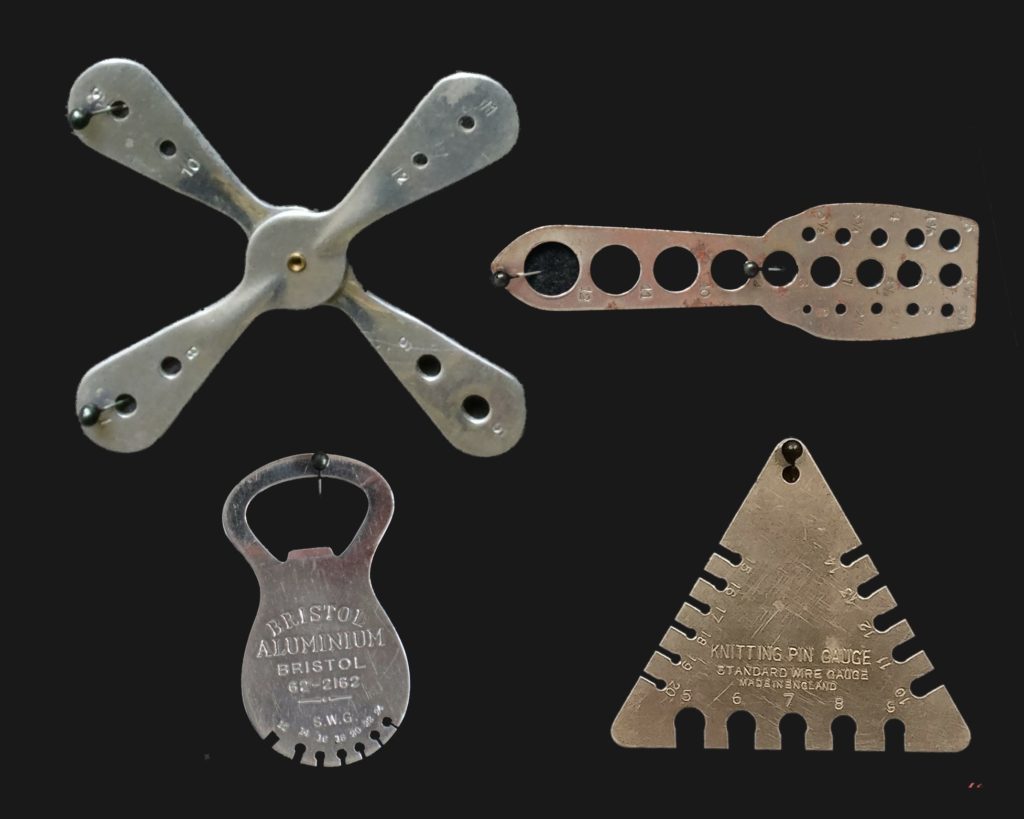
Sometimes there is a fine line between what is regarded as a knitting needle gauge and what is a wire gauge. I have some gauges that are definitely wire gauges. They are generally heavier and not of polished metal. Some of the older bells call themselves wire gauges although they are almost identical to those called needle gauges.
The four metal gauges above are grouped together even though they have little in common.
- The triangle says Knitting Pin Gauge. Standard Wire Gauge. Made in England. It has slots to measure from 5 to 14
- The bottle opener says Bristol Aluminium Bristol 62-2162 S.W.G. On one side the sizes are SWG (Standard Wire Gauge) 12 – 24. on the other side they are decimal .104 to .022. The measurements are the width of the slits not the holes.
- The long gauge has nothing to identify it. The holes seem to be in millimetres. The largest is 12 and the smallest is 3. The really strange thing is that some are marked with fractions, such as 6½. If they are decimal measurements I would expect them to be written as decimals.
- The ‘propeller’ gauge is a rare thing. It was made by the Stratton company (famous for making powder compacts), under the name Stratnoid. It is made from a very lightweight ‘new’ metal alloy
The arms turn for ease of storage. It dates from early 1930s. The holes are sizes 5 to 12.
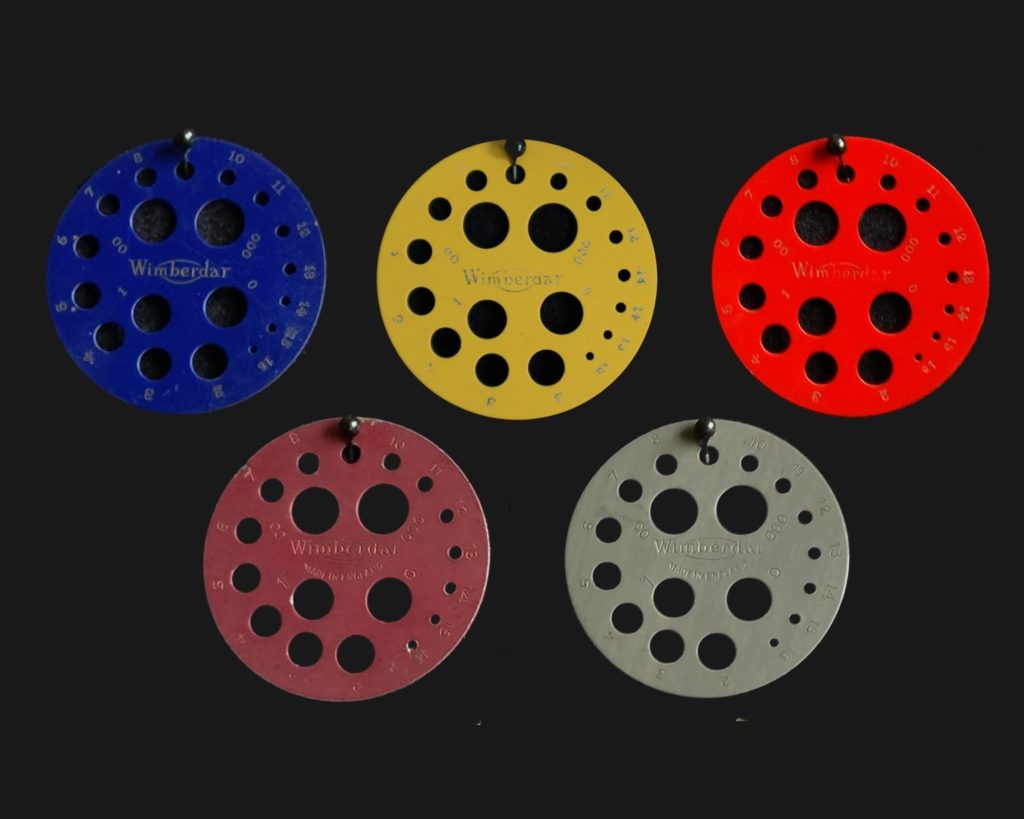
Wimberdar gauges seem to have been fairly common. I have never seen any other colours than those shown here. Three say Made in England; the other two do not. The sizes are from 000 to 16 but the holes in the centre do not seem to be in a logical order.
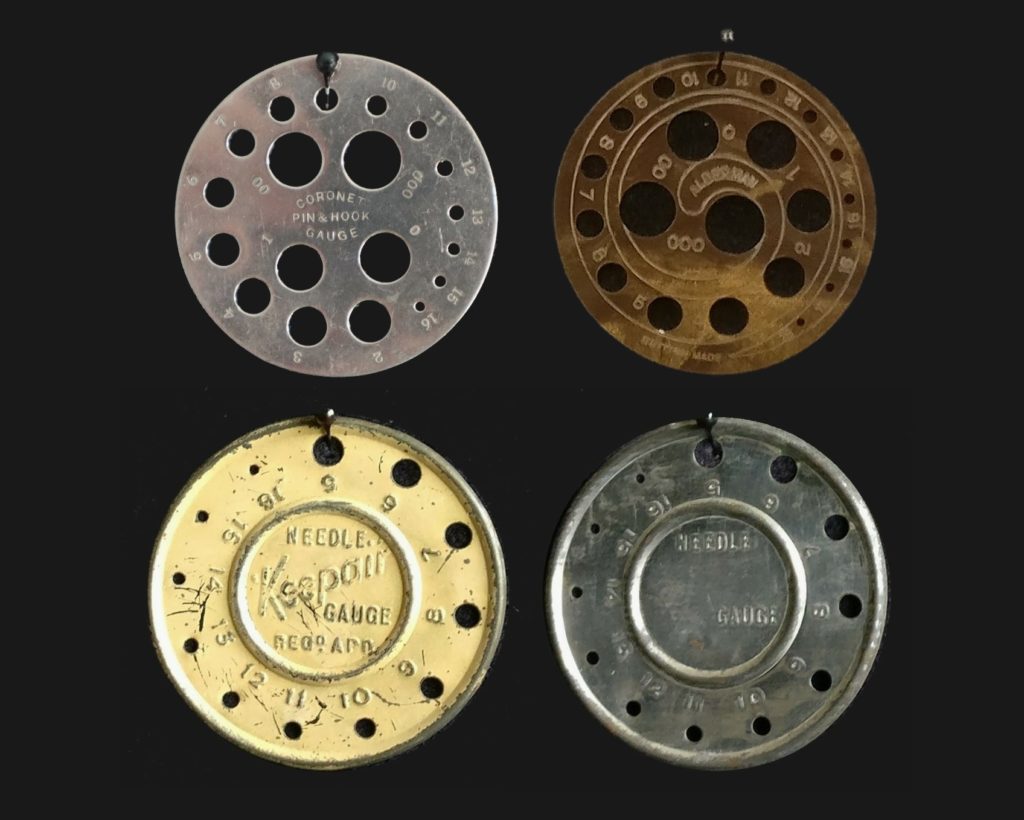
- The Coronet Pin and Hook Gauge is a metal version of the Wimberdar gauges and is much less common.
- The ‘tortoiseshell’ plastic gauge is much thinner than any of the others. It has a nice spiral coiling round the holes. It says Alderman British Made and has holes from 000 to 18. I cannot find any references to this anywhere.
- It seems likely that the other two gauges were from the same company. One says Keepair; the other has no name. They both say Needle Gauge and have the same holes from 5 to 16. I think they were originally the lids of cardboard tubes for holding the needles.
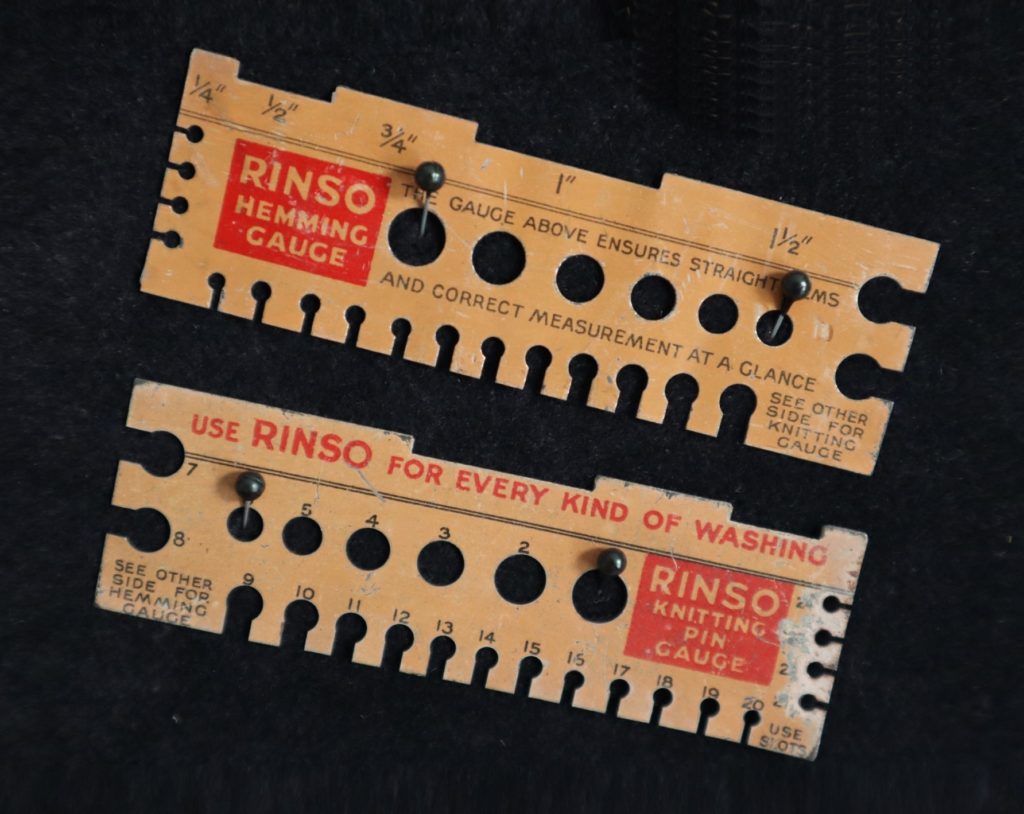
This gauge was given away with Rinso washing powder in the 1930s. The holes are from 1 to 24. On one side it says Use Rinso for every kind of washing. Rinso Knitting Pin Gauge. Use Slots. See other side for hemming gauge. On the back it says Rinso Hemming Gauge. The gauge above ensures straight hems. See other side for knitting gauge.
Several years ago I wrote to the company who made Rinso to ask if they had any information about the gauges. I haven’t been able to find their response but I remember that their comment was “We no longer make Rinso”.
For more information about the history of needle gauges, and the companies that made them see The History of Knitting Pin Gauges by Sheila Williams.
Stratnoid was also a brand of knitting needles in the 1930s. There are adverts for them in my ‘Vogue Knitting Books’ from then.
True. I had a lot and gave them to a needle collector in Australia. Some (maybe all) were made from the same strange alloy. I don’t think they would be very nice to work with. I may still have some somewhere. They still turn up in charity shops but I ignore needles – unless they have rulers on.